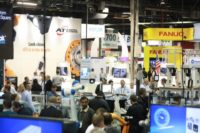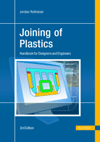February 18-24, 2024 is Engineers Week. This year's theme “Welcome to the Future” is about celebrating today’s achievements and paving the way for a brighter and more diverse future in engineering. As part of its educational efforts to engage students in engineering, DiscoverE.org has downloadable resources such as an assembly line activity.
The goals of the assembly line activity are as follows:
- Exhibit the skill to assemble a project by hand that meets the quality control criteria.
- Design an assembly line process to assemble a product as quickly and efficiently as possible meeting the quality control criteria.
- Demonstrate the ability to test and redesign the assembly line process.
- Compare the difference between assembling a product individually versus with an assembly line.
As an introduction to the educational assembly line activity, DiscoverE writes:
"The origins of the assembly line can be traced back to miners during medieval times who used bucket elevators to the shipbuilders of the fourteenth century who created moving lines of parts. By the 1900’s the assembly line was used by many industries (shipbuilding, canning, milling, meatpacking, etc.), but was most successful in the automobile industry.
Henry Ford created the Model T automobile in 1908. The car was simple so owners could fix it themselves. It was also sturdy and cheap. Soon, the Ford Motor Company started receiving so many orders for Model T’s that they couldn’t build them quickly enough. To speed up production, Ford changed the way the Model T was built.
Instead of several groups of workers each building a complete car from the ground up, workers stayed in one spot and added parts to cars as they moved past them. Parts were delivered to the employees by conveyor belts. Ford even managed to time the delivery of a part so that it would get to a worker only when it was needed. By 1913, Ford had a complete assembly line functioning. This method of production was rapidly adopted by many industries when they discovered that mass production on assembly lines sped up manufacturing time and lowered costs.
Ford used an approach for his assembly line that we call just-in-time (JIT) manufacturing today. This approach lets manufacturers purchase and receive components just before they’re needed on the assembly line. As a consequence, it relieves manufacturers of the cost and burden of housing and managing idle parts. The basic elements of JIT were developed by Toyota in the 1950’s and were well-established in many Japanese factories by the early 1970’s. JIT began to be adopted in the U.S. in the 1980’s (General Electric was an early adopter) and is now widely accepted and used."
Support Engineers Week by celebrating how engineers make a difference in our world, engage students in engineering, and by following key dates and hashtags.
Key Dates + Hashtags
- Sun, Feb 18: #Eweek2024 #WelcometotheFuture Kick Off
- Tues, Feb 20: #FutureCity2024 Finals
- Thurs, Feb 22: Celebrate #GirlDay2024
- Sat, Feb 24: Last Day of #Eweek2024
- Mon, March 4: Celebrate #WorldEngineeringDay







